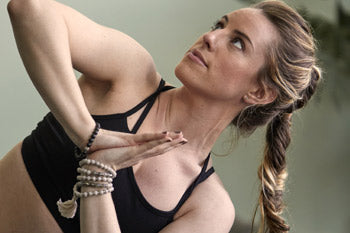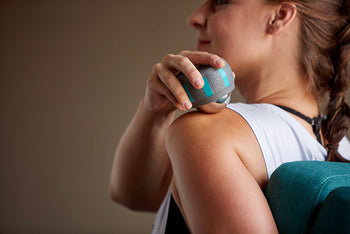9 Ways to Reduce Your Risk of Heart Disease

The number-one killer in America (for both men and women), heart disease is the result of the narrowing of the arteries that supply the heart with blood, oxygen, and nutrients. This process, called coronary artery disease, can generally be traced to a condition called atherosclerosis, the build-up of cholesterol-rich fatty deposits, or plaques, on the inside of arterial walls. As these deposits accumulate over time, the coronary arteries narrow to the point that the flow of oxygenated blood to the heart is impeded. (Arterial spasms — triggered by smoking, extreme emotional stress, or exposure to very cold temperatures — may also cause coronary arteries to narrow suddenly and dangerously.)
The Risk Factors — and How You Can Reduce Yours
Major risk factors for cardiovascular disease include cigarette smoking, high blood pressure, high cholesterol and/or triglycerides, diabetes mellitus, obesity, sedentary lifestyle, and poor nutrition. Prevention and treatment centers around these risk factors — and these approaches will help you lower risk for many other types of illness, as well as helping you feel great and have more energy overall.
1. Don't smoke.
Cigarette smoking remains the leading preventable cause of cardiovascular disease in women, with more than 50 percent of heart attacks among middle-aged women attributable to tobacco. Risk of cardiovascular disease begins to decline within months of smoking cessation and reaches the level of persons who have never smoked within 3 to 5 years.
2. Lower your cholesterol.
High blood cholesterol is a condition that greatly increases your chances of developing coronary heart disease. Extra cholesterol in the blood settles on the inner walls of the arteries, narrowing them and allowing less blood to pass through them to the heart. Aim for total cholesterol below 200 mg/dL; LDL cholesterol below 130 mg/dL and HDL above 35 mg/dL.
3. Maintain a healthy weight.
Obesity and sedentary lifestyles are epidemics in the United States that contribute to increased risk of cardiovascular disease. The prevalence of obesity has increased among both men and women in the United States in the past decade; currently about one third of adult women (or 34 million) are classified as obese. Also, 60 percent of both men and women get no regular physical activity. Obesity, especially abdominal adiposity, is an important risk factor for cardiovascular disease in women.
4. Exercise regularly.
Recent evidence suggests that even moderate-intensity activity, including brisk walking, is associated with substantial reduction of cardiovascular disease risk. These findings support the 1995 federal exercise guidelines endorsing 30 minutes of moderately intense physical activity most days of the week, a program that should be feasible and safe for most of the population. Regular exercise and maintenance of healthy weight should also help reduce insulin resistance and the risk of non-insulin-dependent diabetes mellitus, which appears to be an even stronger risk factor for cardiovascular disease in women than in men. Diabetes is associated with a threefold to sevenfold elevation in cardiovascular disease risk among women, compared with a twofold to threefold elevation among men. Approximately half of all deaths in patients with non-insulin dependent diabetes mellitus are due to heart disease.
5. Eat less saturated fat, more produce and more fiber.
Diets low in saturated fat and high in fruits, vegetables, whole grains, and fiber are associated with a reduced risk of cardiovascular disease. Also, a recent study reported in the Annals of Internal Medicine journal confirmed that eating fruits and vegetables, particularly green leafy vegetables and vitamin C-rich fruits and vegetables, seems to have a protective effect against coronary heart disease. You may even think about moving toward more flexitarian or vegetarian eating habits: A vegetarian diet reduces the risk of coronary artery disease, and may even reverse existing coronary artery disease when combined with other lifestyle changes. A Mediterranean diet that uses olive oil can reduce the risk of coronary artery disease.
6. Avoid trans fats.
Trans fatty acids have been linked to adverse lipid profiles and an increased risk of cardiovascular disease. This includes most margarines. The role of other fatty acids, including monounsaturated, polyunsaturated, and marine omega-3 fatty acids, remains controversial.
7. Consume alcohol only in moderation.
Moderate intake of alcohol is related to reduction of cardiovascular disease — but may raise blood pressure and increase risk of breast cancer. Early surgical menopause is linked to increased risk of cardiovascular disease, which appears to be negated by the use of estrogen therapy.
8. Arm yourself with risk-reducing vitamins.
Antioxidant vitamin supplements, particularly vitamin E and homocysteine-lowering agents such as folate and B6, have promising roles in prevention of cardiovascular disease, but conclusive evidence may hinge on the results of several ongoing randomized clinical trials. When it is found in unusually high levels, homocysteine brings the same degree of risk as having high cholesterol does. The B vitamins, especially folic acid and B12, will drive elevated homocysteine levels down to normal, often without the need of any prescription medication.
9. Give yourself some new stress-management tools.
Poorly controlled stress may have an adverse effect on blood lipids. An attitude of hostility has been powerfully linked with a higher incidence of cardiac events, and cynical distrust has been associated with accelerated progression of carotid artery disease. Relaxation methods (meditation, breathing exercises), yoga, and stress management techniques are essential for preventing cardiovascular disease and coronary artery disease and for reducing the risk of recurrent cardiac problems. Meditation improves exercise tolerance and decreases electrical changes associated with poor circulation to the heart. Meditation has also been shown to lower cholesterol and reverse carotid artery thickening. Also consider acupuncture, which has been shown to help relax the myocardium and improve circulation.
Ask your health professional about herbs and nutritional supplements that may be useful in preventing and treating cardiovascular disease, including:
- Bilberry
- Turmeric (curcumin)
- Fenugreek
- Ginger
- Guggul
- Ginkgo
- Garlic (one garlic clove is roughly equal to 4 mg to 1 gram of garlic; a daily dose of 600 to 800mg may be recommended)
- Onion
- Vitamin B12
- Folic acid (500 to 5000 micrograms daily may be recommended)
- B6
- L-Carnitine
- Coenzyme Q10 (100 to 300 mg daily may be recommended)
- Vitamin E (400 to 800 International Units daily may be recommended)
- Magnesium (200 to 400 mg daily may be recommended)
- Niacin (A typical oral dose of 100 mg, three times daily; may gradually increase to avg. dose of 1 gram three times daily, with a maximum dose of 6 grams. Extended release tablets: Dosing may begin with one 375-milligram tablet at bedtime and be increased by no more than 500 mg per four-week period, to a maximum of 2,000 mg, given as two 1,000-milligram tablets before bed)
- Fish oils (6 grams daily may be recommended)
- Soy (Isoflavones may be recommended)
Also in Blog

Body Peace & Personal Empowerment

Yoga for Swimmers: Poses for Strength and Mobility







